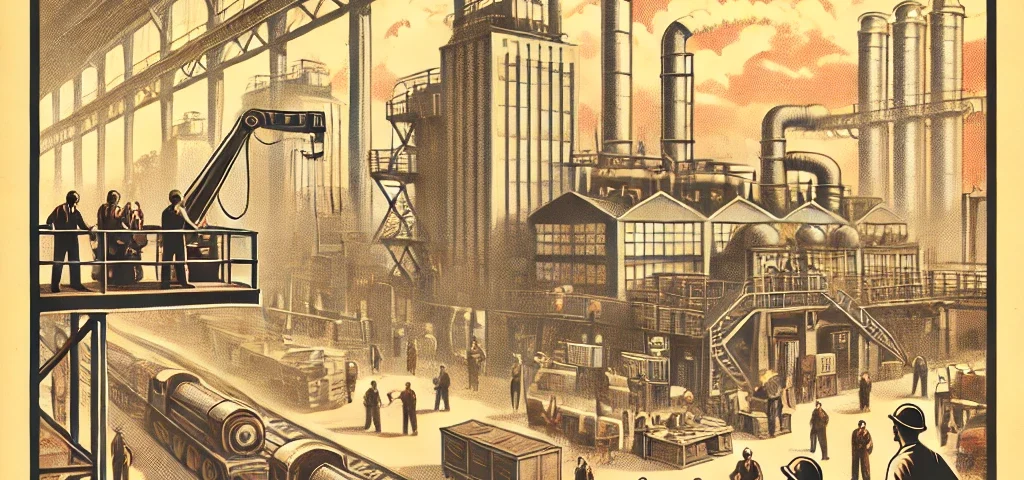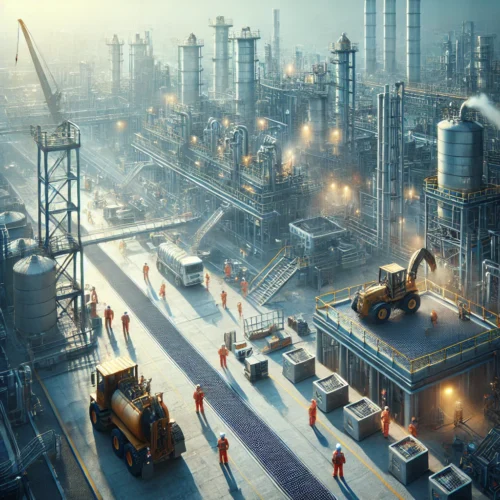The Importance of Workplace Security in Industrial Environments

Workplace security is critical for any business, but its importance is amplified in industrial environments. These settings often involve heavy machinery, hazardous materials, and complex operational processes that pose unique risks. Ensuring a secure environment is vital to protect employees, safeguard assets, prevent accidents, and maintain operational efficiency. This article explores why workplace security is crucial in industrial settings and outlines the essential elements to ensure it.
Understanding Workplace Security
Workplace security encompasses various measures designed to protect employees, physical assets, and intellectual property from harm or theft. In industrial environments, these measures often need to be more robust due to the high-risk nature of operations. Industrial security not only involves preventing unauthorized access but also ensuring the safety of workers who may face dangers like equipment malfunction, chemical exposure, or physical threats.
Main Challenges
Industrial workplaces face a variety of security challenges that are unique to their operational landscape:
- Access control: With a large number of personnel, contractors, and visitors, managing who enters and exits a facility can be difficult. Without proper security protocols, unauthorized individuals could gain access to restricted areas, potentially causing harm or theft.
- Hazardous materials: Many industrial sites store and handle hazardous materials, making it crucial to prevent leaks, spills, or unauthorized access that could lead to serious accidents.
- Equipment vulnerability: Industrial machinery is often expensive and integral to production processes. Damage or theft can halt operations, leading to costly downtime.
- Cybersecurity threats: As industries increasingly rely on digital technologies for operations, the risk of cyberattacks grows. Protecting critical systems from hackers is an essential part of workplace security.
- Employee safety: Ensuring that workers are safe from both physical and psychological harm is a major challenge. Physical threats may include workplace violence or accidents, while psychological threats could stem from harassment or unsafe working conditions.
Importance of Workplace Security in Industrial Environments
Ensuring security in these environments goes beyond merely protecting assets—it can also save lives. Industrial sites often have a high density of workers and equipment, so any breach in security can have severe consequences. Here are some reasons why workplace security is vital in industrial environments:
- Prevention of accidents: Security measures such as surveillance cameras and access control can prevent unauthorized personnel from entering dangerous areas, thereby reducing the risk of accidents.
- Enhanced employee safety: When employees feel secure in their environment, they are more productive and engaged. Security measures like emergency response protocols and regular drills can prepare employees for potential threats, ensuring quick action when needed.
- Protecting intellectual property: In industries like manufacturing, companies may have proprietary technologies or processes that need to be safeguarded from competitors. Security measures help ensure that sensitive information stays protected.
- Compliance with regulations: Many industries are subject to stringent safety and security regulations. A well-implemented workplace security plan helps companies stay compliant, avoiding legal penalties and protecting their reputation.
Key Elements of a Secure Industrial Workplace
To create a secure workplace, several critical elements must be in place:
- Access control systems: Installing badge readers, biometric scanners, and security gates helps manage who can enter specific areas within the facility. This prevents unauthorized access and helps monitor visitor movement.
- Surveillance systems: Using security cameras across key areas of the facility allows for real-time monitoring. This deters theft and misconduct while also providing evidence if an incident occurs.
- Regular inspection & maintenance rounds: In industries such as chemical, oil & gas, and mining, both the environment and equipment require regular inspections to prevent damage to machinery and reduce risks to workers.
- Employee training: Workers need to be trained not only in their specific job functions but also in security protocols. Regular training ensures that all employees know how to respond in case of an emergency, such as an equipment failure, fire, or security breach.
- Emergency response plans: Having clear procedures for different types of emergencies (fire, chemical spills, etc.) ensures a coordinated and effective response, minimizing damage and injury.
- Cybersecurity measures: With the rise of digital technology, implementing robust cybersecurity measures like firewalls, encryption, and employee awareness training is essential for protecting sensitive industrial data.
Best Practices
Implementing best practices for security in industrial settings can dramatically enhance the safety and efficiency of operations. Some of the top recommendations include:
- Conduct regular security audits: Periodically reviewing security systems and procedures ensures that they remain effective and up-to-date with evolving threats.
- Install integrated security systems: Using an integrated approach that combines physical security measures (like cameras) with digital security (like cybersecurity software) and autonomous robotics (which can automatize inspection rounds and send alerts in real time when issues are detected) can provide comprehensive protection.
- Establish clear communication protocols: In the event of an emergency, clear and immediate communication is crucial. Implementing systems like mass notification alerts ensures that all employees receive timely information during critical situations.
Benefits of Effective Workplace Security
A well-secured workplace brings several long-term advantages:
- Improved employee morale: When workers feel safe, their confidence in the company grows, which enhances overall morale and job satisfaction.
- Operational efficiency: Reducing accidents and security breaches ensures continuous operations, leading to higher productivity and reduced downtime.
- Cost savings: By preventing damage, accidents, or theft, companies save on costly repairs, insurance claims, and legal fees.
Legal and Regulatory Compliance
Compliance with workplace security regulations is mandatory for industrial environments. Regulatory bodies such as OSHA in the US (Occupational Safety and Health Administration) and other local agencies impose strict guidelines on industrial safety and security. Non-compliance can lead to severe penalties, including fines, shutdowns, and damage to a company’s reputation.
Technology and Innovations in Workplace Security
 Advancements in technology have brought new solutions to industrial workplace security. Innovations such as autonomous robots for industrial inspections, AI-powered surveillance cameras, automated access control systems, and IoT (Internet of Things) devices allow for real-time monitoring and faster response times. These technologies not only enhance security but also streamline the management of industrial facilities.
Advancements in technology have brought new solutions to industrial workplace security. Innovations such as autonomous robots for industrial inspections, AI-powered surveillance cameras, automated access control systems, and IoT (Internet of Things) devices allow for real-time monitoring and faster response times. These technologies not only enhance security but also streamline the management of industrial facilities.
Conclusion
Workplace security in industrial environments is non-negotiable. It protects employees, ensures smooth operations, and shields companies from financial and reputational harm. By implementing a robust plan that includes physical, digital, and procedural safeguards, industrial organizations can create a safer, more productive workplace.
Interested in boosting security at your industrial facilities by integrating an autonomous robot dog like Keyper for regular inspections? Schedule a demo with our team today!




